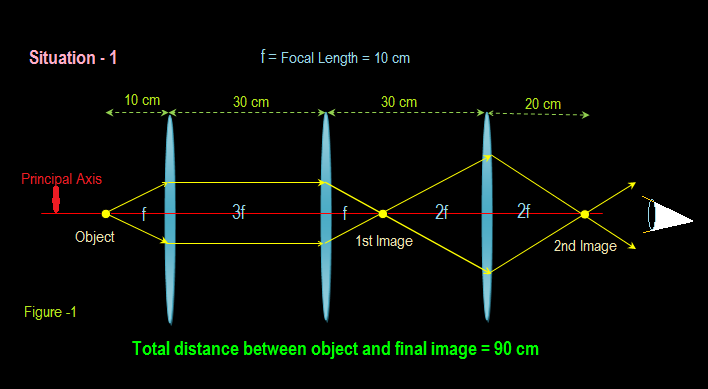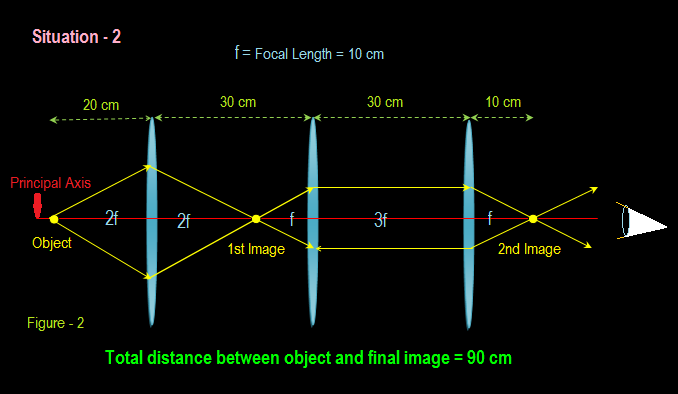Question #84df3
2 Answers
No shift.
Explanation:
Let three lenses we named as
(1) Let the point source be placed at given distance of
It is placed at the left Focus of this lens. All rays of light from the object will become parallel to the principal axis and strike lens
Lens
Since the distance between the lenses
This location of object for
Distance between Object and final image
(2) When the device is moved away from the source by another
Since the distance between the lenses
this implies that It is located at the left Focus of lens
Lens
Distance between Object and final image

Given that the 3 convex lenses each of focal length
are placed inside a hollow tube at equal spacing of
We are to find out the distance between object and final image in two given situations.
Situation -1(Figure - 1)

In the 1st situation the point object is placed at a distance
So it is obvious from figure that the distance between object and final image in the 1st situations is
Situation -2 (Figure-2)

In the 2nd situation the point object is placed at a distance
So it is obvious from figure that the distance between object and final image in the 1st situations is
Please note that the principle of reversibility of light also provides the same result as if in the second situation the object is placed in the final image position of the 1st situation and the image is formed in object position of the 1st situation. So their positions are interchangeable.

